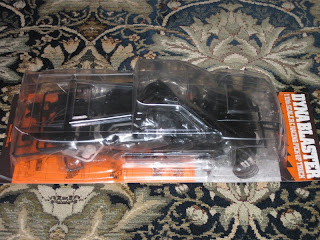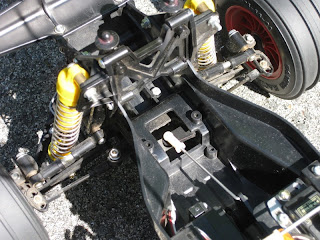The truck uses a unique clutch system called "MDC" (Multi-Disc Clutch). The spring tension in the clutch is adjusted through a nut accessible on the spur gear shaft.
Here are the side panel shots:
Since this was designed to be a racing truck, Tamiya did not include any speed control or motor with the kit. The front and rear tires are the same as the Stadium Blitzer (58106 & 58482) and Stadium Thunder (58181 & 58524).
 |
| Tamiya still used blister packaging in 1993 |












































































